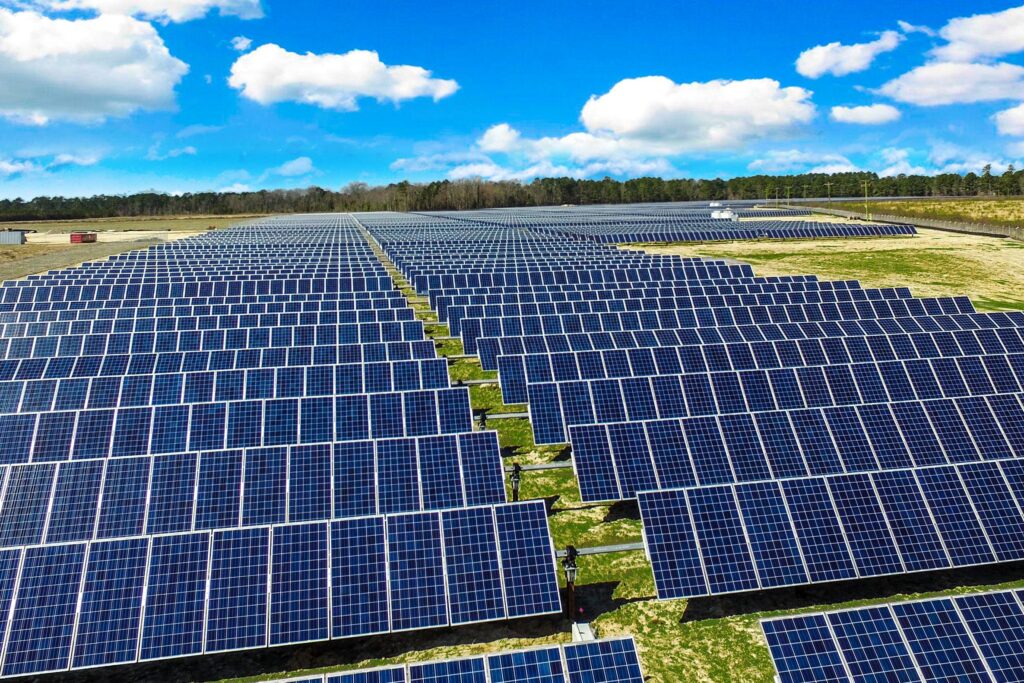The Solar Energy Industry Association has claimed that 30,000 jobs could be lost if tariffs are reinstated on solar panels coming in from Chinese companies based in Southeast Asia. This claim is wholly fictitious, based on inflated job numbers and a purely hypothetical analysis of the sort that has been disproved by the facts again and again.
As we explain below, all SEIA figures for jobs, including their claim that 255,000 people work in the solar industry today, are inflated by a factor of five to ten compared with objective reliable sources for employment data.
Further, the 30,000 job lost figure comes from a hypothetical exercise assuming that if tariffs are imposed on Southeast Asian solar panels, the full cost of the tariffs will be passed onto panel purchasers and raise the price of panels.
All the evidence from the past decade proves this is not the case. When tariffs were first imposed on Chinese solar panels in 2011, importers made the same claim. Yet since then, solar panel prices have continued to fall. According to the federal National Renewable Energy Lab, solar panel prices have fallen about 85% in the last decade, from $2.50 a watt to 40 cents a watt. Further, other industries show the same pattern. The U.S. International Trade Commission recently published a study showing that a 25% tariff on steel imports led to the U.S. steel price rising by only 2.4%, in line with inflation.
If the tariffs raise prices not at all or by an amount less than inflation (which is today running at unusually high levels), then solar demand and installations will not be impacted at all and will continue to grow. Jobs will continue to be added in solar installation. On top of that, tariffs on Southeast Asian imports will give another big boost to the U.S. solar equipment manufacturing industry, as well as the manufacturing industries that provide components to solar panels such as copper wiring and steel used for tracking systems. The tariffs could easily lead to an additional 5,000 to 10,000 manufacturing jobs, on top of those already envisaged by expanding solar panel producers.
Equally important, those manufacturing jobs are long-term permanent jobs, not the itinerant work that so many roofers/solar installers participate in today. Permanent jobs, with benefits, are much healthier for the economy and for individual workers and their families.
Today, there are more than a dozen U.S. companies actively expanding their solar panel production facilities in the U.S., thanks to the existing tariffs and the tax credits available in the Inflation Reduction Act.
Digging Into Those Solar Jobs Claims
The annual “Solar Jobs Census” put out by a solar industry lobby group, the IREC, has long been the subject of suspicions and questions from independent economists. The lengthy report claims that as of 2021, there were 255,037 working in the U.S. solar power industry, all of them working at least 50% of their time in the solar industry. That huge number is a great benefit to the solar industry’s lobbying efforts, enabling the industry to position the industry as a major employer.
The problem is that the data from other, genuinely independent sources suggests that the so-called “Census” numbers are wildly exaggerated. For example, the U.S. Bureau of Labor Statistics (BLS), generally seen as the gold standard for data on U.S. jobs and workers, reported last year that as of 2021, there were only 17,100 solar installers in the entire U.S. Installers are generally seen as the largest job category in the solar industry. There are also several thousand employees engaged in operating solar facilities, mostly at power utility companies, and another several thousand in solar equipment manufacturing. Put all that together, and you still come up with a figure that is some 90% below the figure claimed by the Solar Census.
Still another estimate of the size of solar employment comes from IbisWorld, one of the largest and most respected market research agencies. In their most recent study, IbisWorld stated that there are, as of 2023, 52,363 employees in what it calls the Solar Panel Installation Industry. That’s more than the BLS figure, because it includes all employees at solar panel companies instead of just the installers. Nevertheless, it’s some 80% smaller than the figure cited by IREC and its allies, the solar trade association SEIA.
Another way to look at the employee count is to look at individual companies. Sunrun is the largest solar installer in the U.S. According to financial reports and SEC filings, Sunrun installed just under 1 gigawatt of solar power last year and it has 9,200 employees. In other words, it installed about 5% of total U.S. capacity. If you do the math, that suggests the entire industry might employ some 184,000 Americans. But that’s probably exaggerated. Sunrun focuses on the residential part of the industry, which is much more labor-intensive than the utility sector. For example, if you contract with Sunrun for your home, you might expect four or five employees to turn up to install four to ten solar panels on your roof. But utilities are far more efficient. They would perhaps install ten times as many solar panels with only three times as many workers. So a reasonable estimate takes us back to the 50,000-75,000 level for solar industry employees.
How does the Solar Census reach such huge employment figures? There are hundreds of thousands of employees at America’s power utilities and many of them have some interaction with solar power, or solar power contracts, or other activities. The Census may be counting employees who spend only part of their time on solar business. Similarly it may be counting roofers who spend the majority of their time installing conventional roofs and only a few days a year installing solar roofs.













